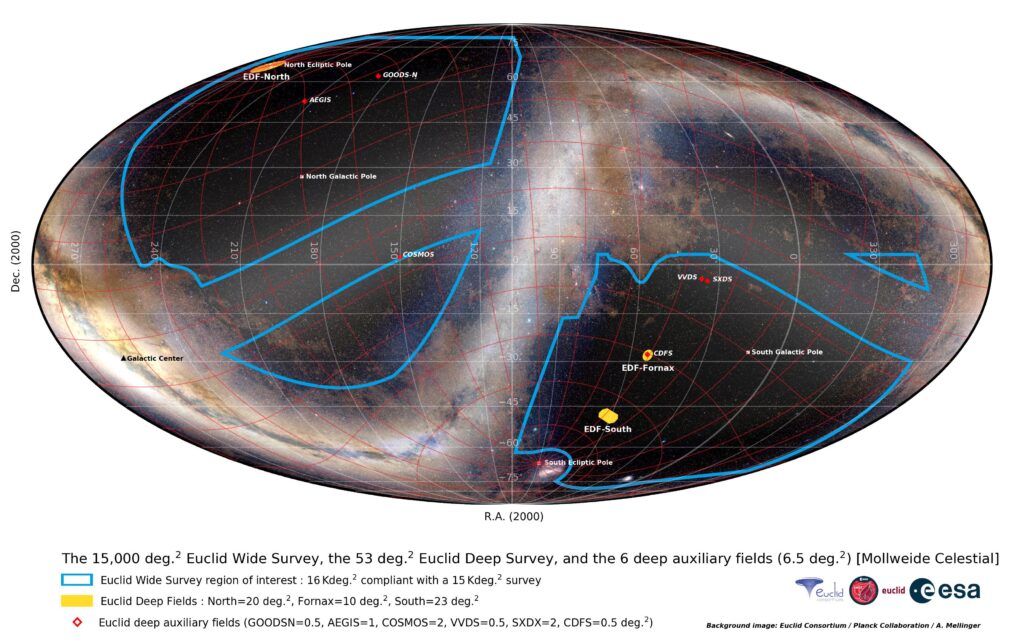The Euclid Surveys
The Euclid mission will conduct primarily two different surveys: a “Wide Survey”, covering about 14,000 square degrees on the sky, and a “Deep Survey” of about 50 square degrees, where the instruments will observe three fields much longer than the rest of the sky to capture much fainter galaxies. Overall, these surveys will take 6 years – Euclid’s nominal mission time.
The Euclid Wide Survey
Euclid’s Wide Survey is, as the name suggests, aimed at covering a very large area. 14,000 square degrees are more than a third of the total sky. The area chosen for Euclid to look at comprises most of the sky that is both neither too close to the Milky Way nor the Solar System plane. The reason is that Euclid will use distant galaxies as its main diagnostic.
The plane of the Milky Way, which the Solar System sits in, simply has too many Milky Way stars in each image, as well as a lot of obscuring dust that makes observations of galaxies behind the Milky Way both very “contaminated” with images of stars, as well as the light dampened by dust. Any distant galaxy would simply look much fainter than without that dust obscuration.
All areas also lie outside the plane of the Solar System. All planets orbit the Sun approximately in one plane. That plane also contains a lot of residual dust and gas from the early days of the Solar System’s formation and this dust and gas reflects sunlight, the so-called “zodiacal light”, which would appear as additional background light on any Euclid image. For this reason Euclid’s survey areas keep a good distance from both these planes – and basically Euclid will observe all “good” area of the sky that is not affected.
The Euclid Deep Survey
For the Wide Survey, Euclid will observe each patch on the sky only once, with a footprint of 0.57 square degrees, about 3x the surface of the full moon, about every hour. For a much smaller area of 53 square degrees, however, Euclid will observe much longer, 40-53x longer than in the Wide Survey. This deep survey will allow to calibrate many aspects of the mission, and will later be used for a lot of legacy science projects.

While ~50 square degrees sounds little in comparison to 14,000, this area is about the same area that the Hubble Space Telescope observed total in the past 30+ years.
The Deep Survey will cover three different fields that are at the so-called ecliptic poles, away from the Solar System plane, as well as in the region of the constellation Fornax.
Our overview page for scientists has all the numbers on these surveys as well as links to background literature.
